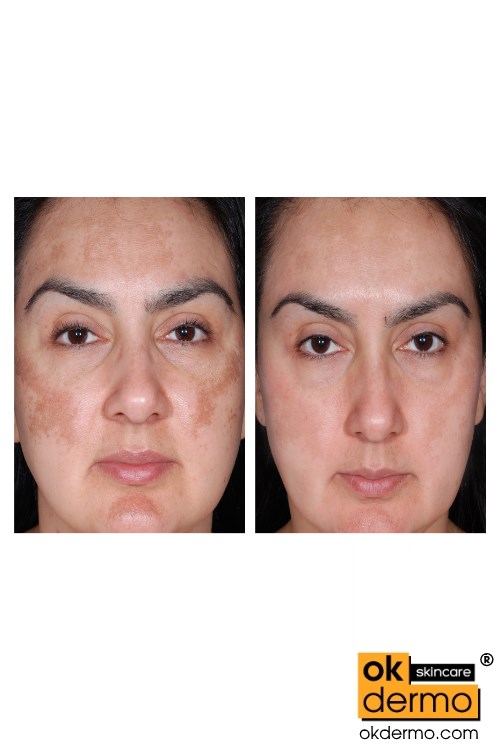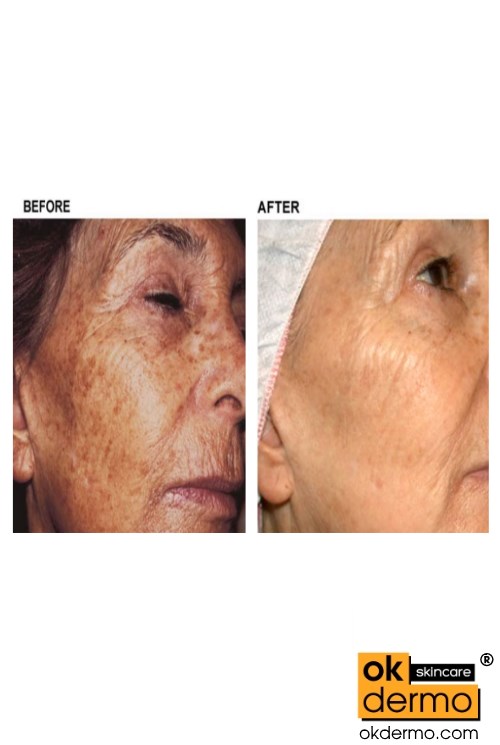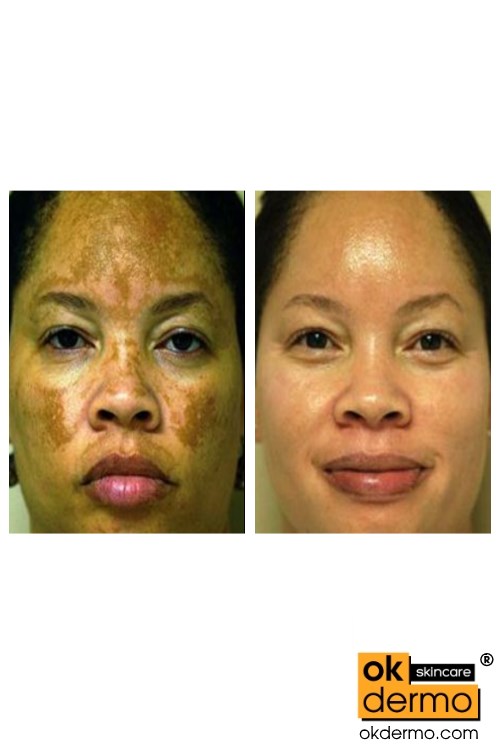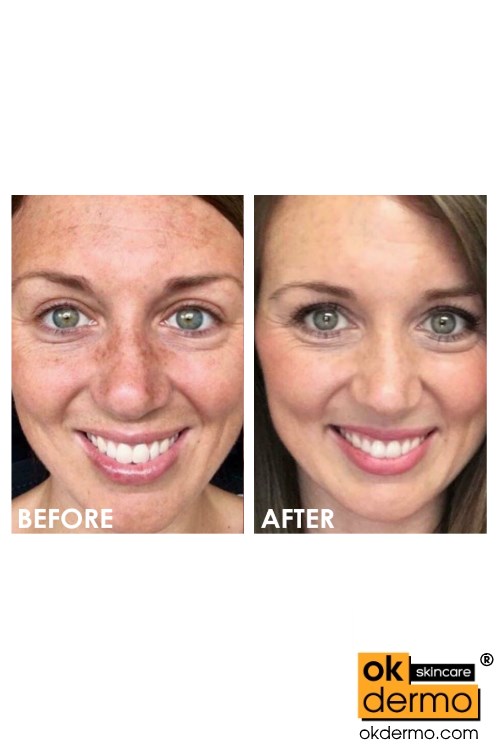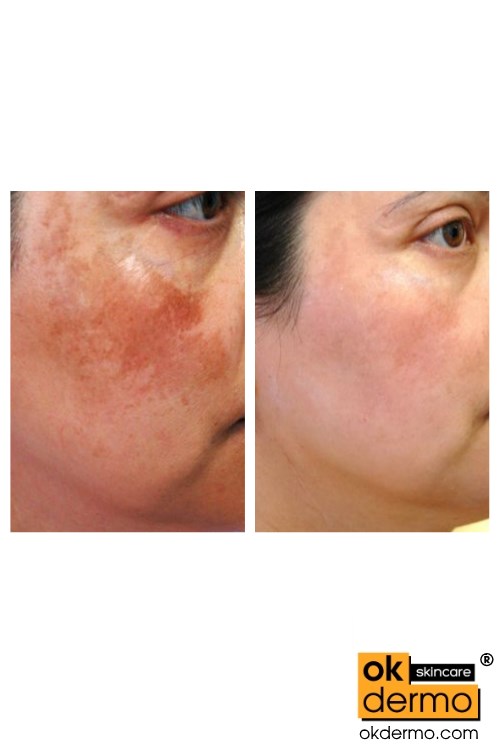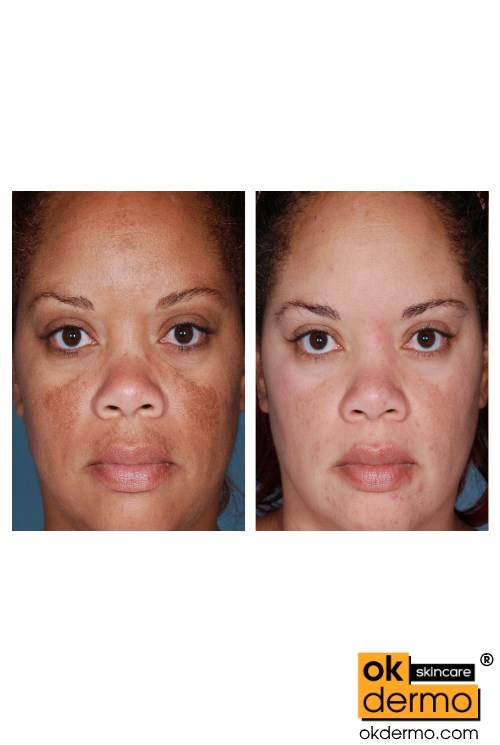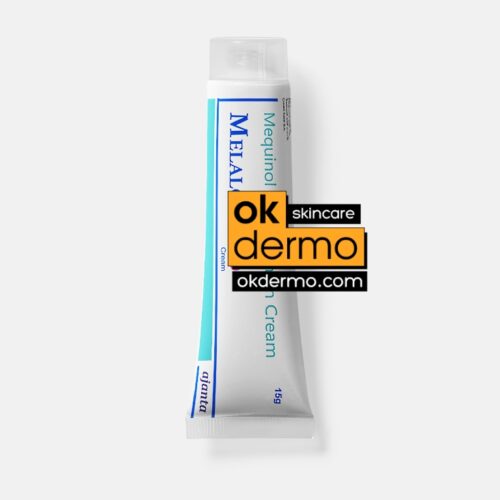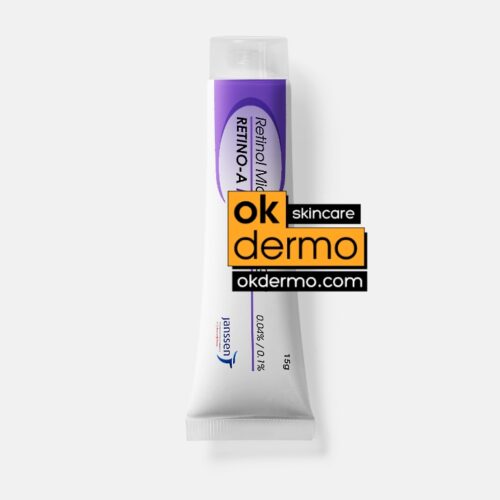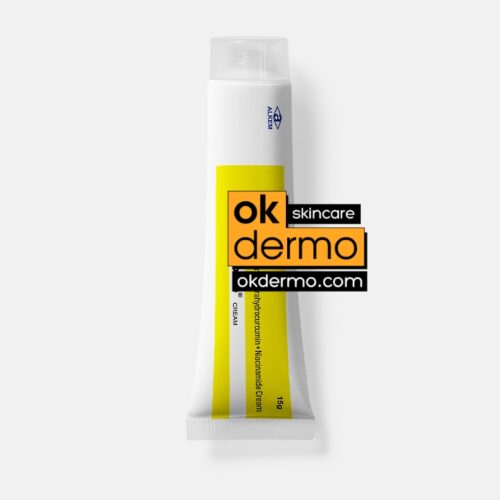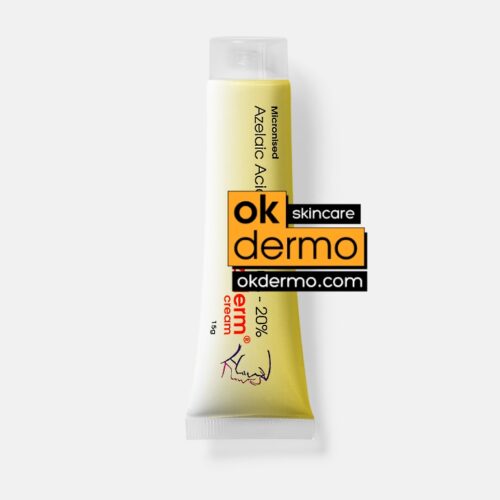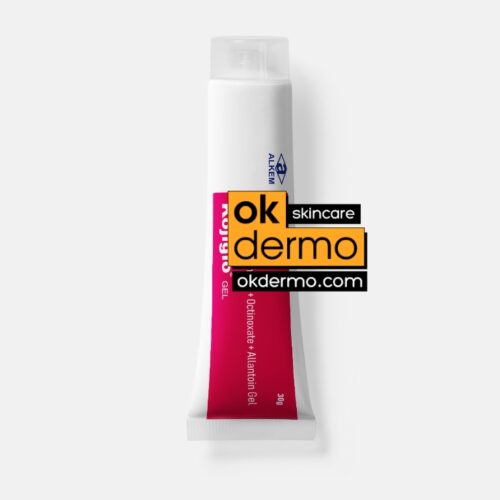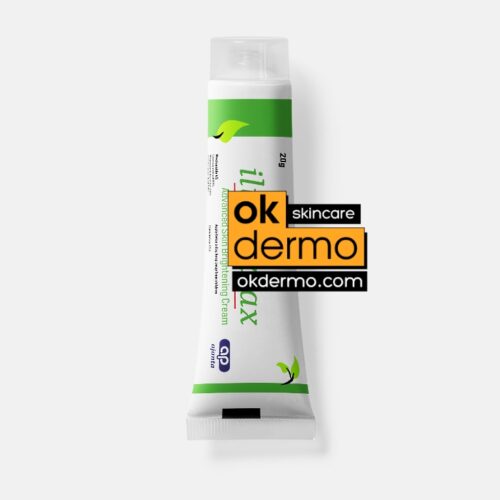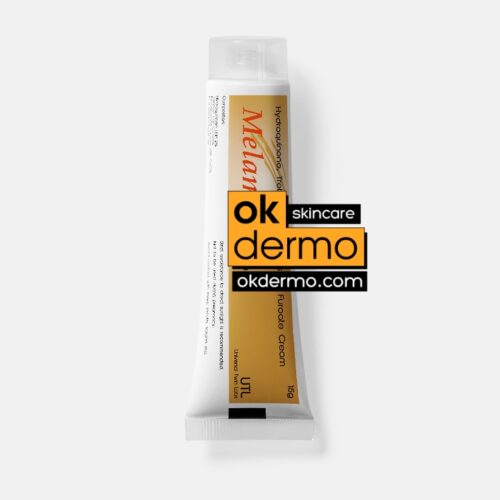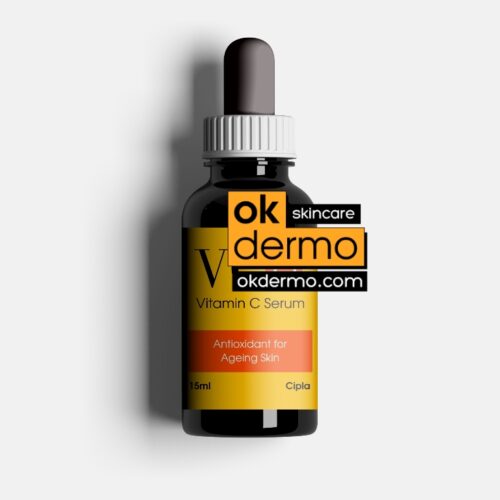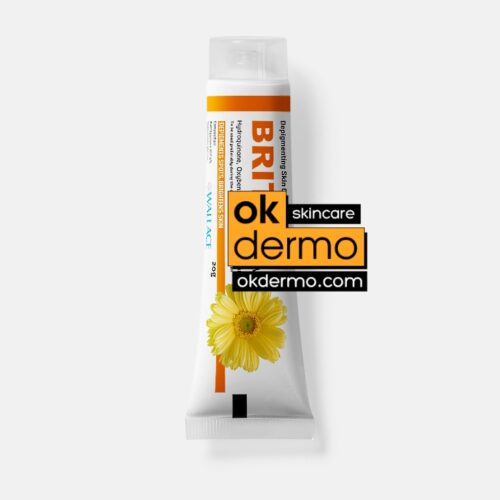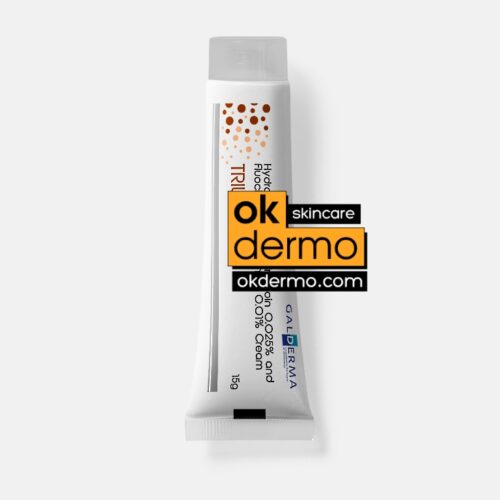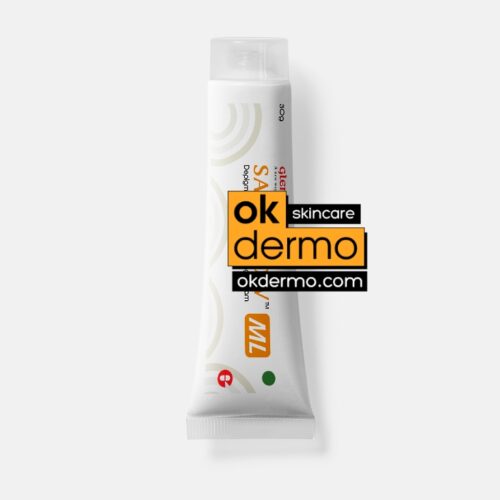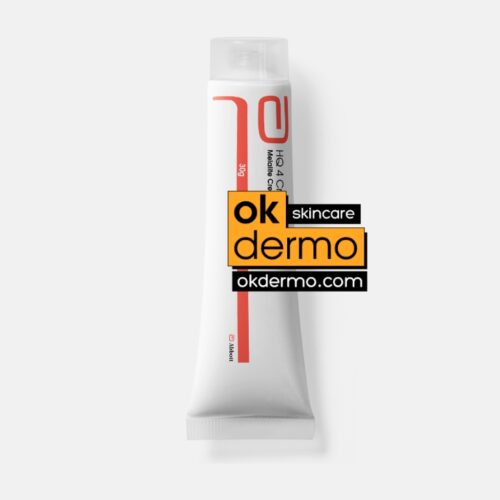Description
WHAT IS PURE HYDROQUINONE 3% CREAM
Hyde Hydroquinone 3% Cream by reputable brand Menarini consist of high-quality Hydroquinone Monohydrate 3% which is used flawlessly in dermatology for flawless skin hyperpigmentation treatment, dark skin patches, melasma, and other skin discolorations. Hydroquinone 3% is an ingredient found in many skin-lightening products marketed to women for purposes of reducing age spots, melasma, freckles, and other types of hyperpigmentation. In 2006, the U.S. Food and Drug Administration (FDA) proposed a rule that hydroquinone is considered “generally recognized as safe and effective,” or GRASE. Depending on the concentration of hydroquinone in your skin lightener, you may get sufficient results; however, there are known side effects you should be aware of when using a hydroquinone-based bleaching cream.
Cutihyde® Cream manufactured by Resilient Cosmeceuticals is a skin-lightening medication. It works by reducing the amount of pigment (melanin) that causes darkening of the skin. It does so by suppressing the activity of tyrosinase, the enzyme required to make melanin.Cutihyde® Cream decreases the formation of melanin in the skin. Melanin is the pigment in the skin that gives it a brown color. Cutihyde topical (for the skin) cream is used to lighten areas of darkened skin such as freckles, age spots, melasma (sun damage), or chloasma (darkened skin caused by hormonal changes). Cutihyde Hydroquinone 3% topical solution is indicated for the gradual bleaching of hyperpigmented skin conditions such as chloasma, melasma, freckles, senile lentigines, and other undesired areas of melanin hyperpigmentation.
Cutihyde® Hydroquinone 3 percent (HQ) is the trusted therapy of hyperpigmentation (dark patches on the skin). Topical hydroquinone 3% is considered to be the most effective agent for the treatment of melasma – a hyperpigmentation disorder. With the most recommended safe strength of hydroquinone i.e 3%. Cutihyde cream is the best choice for maintenance therapy of hyperpigmentation disorders. Not recommended to use a prolonged period of time, longer than 3-4 months in a row. Better and safer results when used day one Cutihyde® Cream and the next day Azelaic Acid 20% cream/gel.
Indications: Melasma, Photo-aging, Chloasma, Freckles Lentigines, Pigmented Skin Areas.
Cutihyde Hydroquinone 3 skin cream is used to lighten the dark patches of skin (also called hyperpigmentation, melasma, “liver spots,” “age spots,” freckles) caused by pregnancy, birth control pills, hormone medicine, or injury to the skin. This product also contains sunscreens to help prevent spots from returning due to sunlight or ultraviolet light exposure. This medicine works by blocking the process in the skin that leads to discoloration.
The term skin hyperpigmentation refers to the dark, discolored patches of skin that occur when melanin is overproduced. Reasons for this overproduction include sun exposure, skin damage, hormones, and certain medications. The condition is typically harmless, though its appearance on prominent areas of the body – such as the face, can affect your self-esteem. Fortunately, there are several fade creams like Hyde 3% Hydroquinone intended for melasma recovery. Consult a professional dermatologist to determine one that is suitable for you.
When used in skin-lightening creams and similar products, hydroquinone 3% inhibits the production of melanin, the pigment that gives your skin its color. Cosmetic skin-lightening products containing hydroquinone often have a strident scent reminiscent of bleach, and in fact, they are often referred to as “bleaching creams.”
Skin irritation: A common effect associated with hydroquinone 3% is skin irritation. It should not be used on skin that is dry, chapped, sunburned, or already irritated, nor should it be applied to an open wound. Irritation can be reduced by avoiding the use of harsh cleansing agents, such as soaps and shampoos, hair dye, permanent waves, cream depilatories, waxes made for hair removal, and products that contain alcohol, lime, spices, or other astringents. Avoid using medicated products unless instructed by a dermatologist.
Sun sensitivity: Hydroquinone 3% makes your skin more sensitive to the sun’s damaging ultraviolet rays. However, if you are trying to fade sun spots, freckles, and other types of hyperpigmentation, sun protection is essential, as sun exposure in itself makes discoloration worse. Always smooth on a broad-spectrum sunscreen before you go outdoors so you will not undo the benefits of your skin-lightening products.
Cautions: If purchasing a skin-lightening cream that contains hydroquinone 3%, make sure to read the product’s label first. If you use a topical cream that contains too much hydroquinone you might end up with discoloration that is almost impossible to treat. Only your dermatologist can tell you if it is safe to use hydroquinone 3% at a concentration of more than two percent.
Precautions: do not use if pregnant, breastfeeding or want to impregnate. Contraindicated in case of hypersensitivity, allergy or intolerance to Hydroquinone skincare cream. Exposure to direct sunlight, sunlamps or UV light should be extremely avoided after application, for the best possible results should be used in combination with total sun avoidance program. To be applied at night time only.
This topical medicine is for external use only. Use it in the dose and duration as advised by your doctor/dermatologist. Check the label for directions before use. Clean and dry the affected area and apply the cream. Wash your hands after applying, unless your hands are in the affected area.
The above-mentioned brief is for information purposes. Actual use should be done after proper medical/dermatological consultation only.
Brand Names: Alphaquin HP, Creamnuquin HP, Nuquin HP, Melpaque HP, Melquin HP, Eldoquin, etc. The cream is an alternative to Mediquin, Vitaquin, Lumiquin, Lumacip Plus, Melanox, Refaquin, Interquin.
HYDE HYDROQUINONE 3% CREAM BENEFITS
Hyde 3% Hydroquinone cream designed to lighten discolorations in the skin. It works by reducing the amount of melanin in the skin, making darkened areas lighter. Consumers are buying hydroquinone 3% products for their convenience and results.
Hyde Hydroquinone 3% cream contains hydroquinone a chemical that is used as a skin lightener to reduce the color of highly pigmented skin due to over-production of the pigment melanin, in a variety of skin conditions. Hydroquinone 3% in Hyde cream works by Inhibiting tyrosinase, an enzyme involved in the production of melanin, which is the pigment that gives color to the skin. This slows down the production of melanin, so that as the amount of melanin decreases the darkened skin gradually fades to match normal skin. The skin conditions that Hyde cream is effective in treating include, liver spots or age spots, also known as senile lentigines, that are common in aging skin, freckles, acne scars, and other forms of unwanted skin discoloration. Hyde cream is also used to treat melasma, which are patches of dark skin discoloration that appear on areas of the face and are caused by exposure to the sun, pregnancy, and contraceptive hormones.
Easy to apply: Hyde Hydroquinone 3%cream is painless and easy to apply during your regular morning routine. Manufacturers recommend that the cream be applied regularly, usually once a day, to the discolored areas of skin and rubbed in thoroughly. This ensures that the component is applied only to the areas that need treatment.
Quick results: Most users who use Hyde hydroquinone 3% cream see a change in the discolored skin within three weeks when using the cream twice a day or once a day. Although the cream may take longer to work in some users, its effectiveness can usually be determined within four months. Alternative methods of treating skin discoloration, such as dermabrasion, require scheduled treatments and a healing period of several days or weeks, which Hyde hydroquinone 3% cream does not require.
Few side effects: Users who use Hyde 3% hydroquinone cream rarely report side effects. Those who do may report a mild skin irritation, which usually clears up as soon as the stops applying the hydroquinone 3% cream. More severe allergic reactions, such as swollen or crusty skin or difficulty breathing, are rarely reported. In addition, Hyde hydroquinone 3% cream rarely reacts with other components. Advised to tell their dermatologist about all medications, supplements and herbal remedies they are taking before trying Hyde hydroquinone 3% cream.
How should you use Hydroquinone 3% Skincare Cream?
- Use Cutihyde cream as directed by your doctor. Check the label on the medicine for exact dosing instructions.
- Before using Cutihyde cream for the first time, apply a small amount to an unbroken patch of skin and check-in 24 hours for itching, blistering, or excessive redness or irritation. If these effects develop, contact your doctor as soon as possible and do not use Cutihyde cream on other areas.
- Wash and completely dry the affected areas. Gently rub the medicine in until it is evenly distributed. Wash your hands immediately after using Cutihyde cream, unless your hands are part of the treated area.
- If you miss a dose of Cutihyde cream, use it as soon as possible. If it is almost time for your next dose, skip the missed dose and go back to your regular dosing schedule. Do not use 2 doses at once.
- Ask your doctor any questions you may have about how to use Cutihyde cream.
Hydroquinone 3% USP Skin Lightening Cream Side Effects
Mild burning, stinging, redness, and dryness may occur. If any of these effects persist or worsen, tell your doctor promptly. If your doctor has prescribed this medication, remember that he or she has judged that the benefit to you is greater than the risk of side effects. Many people using this medication do not have serious side effects. Stop using Cutihyde and tell your doctor right away if any of these unlikely but serious side effects occur: blistering, skin cracking, blue-black darkening of the skin. A very serious allergic reaction to this drug is rare. However, seek immediate medical attention if you notice any symptoms of a serious allergic reaction, including rash, itching/swelling (especially of the face/tongue/throat), severe dizziness, trouble breathing. This is not a complete list of possible side effects. If you notice other effects not listed above, contact your doctor.
Hydroquinone 3% USP Cream Contraindications
Before using Cutihyde topical, tell your doctor if you are allergic to any drugs, or if you have liver or kidney disease. Do not use Cutihyde topical on skin that is sunburned, windburned, dry, chapped, or irritated, or on an open wound. It could make these conditions worse. Wait until these conditions have healed before applying Cutihyde topical.
Avoid getting this medication in your mouth or eyes. If it does get into any of these areas, rinse with water. Avoid using skin products that can cause irritation, such as harsh soaps, shampoos, or skin cleansers, hair coloring or permanent chemicals, hair removers or waxes, or skin products with alcohol, spices, astringents, or lime. Do not use other medicated skin products unless your doctor has told you to.
Avoid exposure to sunlight or artificial UV rays (sunlamps or tanning beds). Cutihyde topical can make your skin more sensitive to sunlight and sunburn may result. Use a sunscreen (minimum SPF 50) and wear protective clothing if you must be out in the sun. Never use Hydroquinone 3% USP Cream during pregnancy, breastfeeding, or want to impregnate.
HOW DOES HYDE 3% HYDROQUINONE CREAM WORK
Hyde Hydroquinone 3% Cream belongs to class of components called melanin synthesis inhibitors. It bleaches, whitens the skin by removing the accumulated skin pigment called melanin that causes the darkening of skin areas. Some side effects may appear – allergic to any component of cream, irritation.


